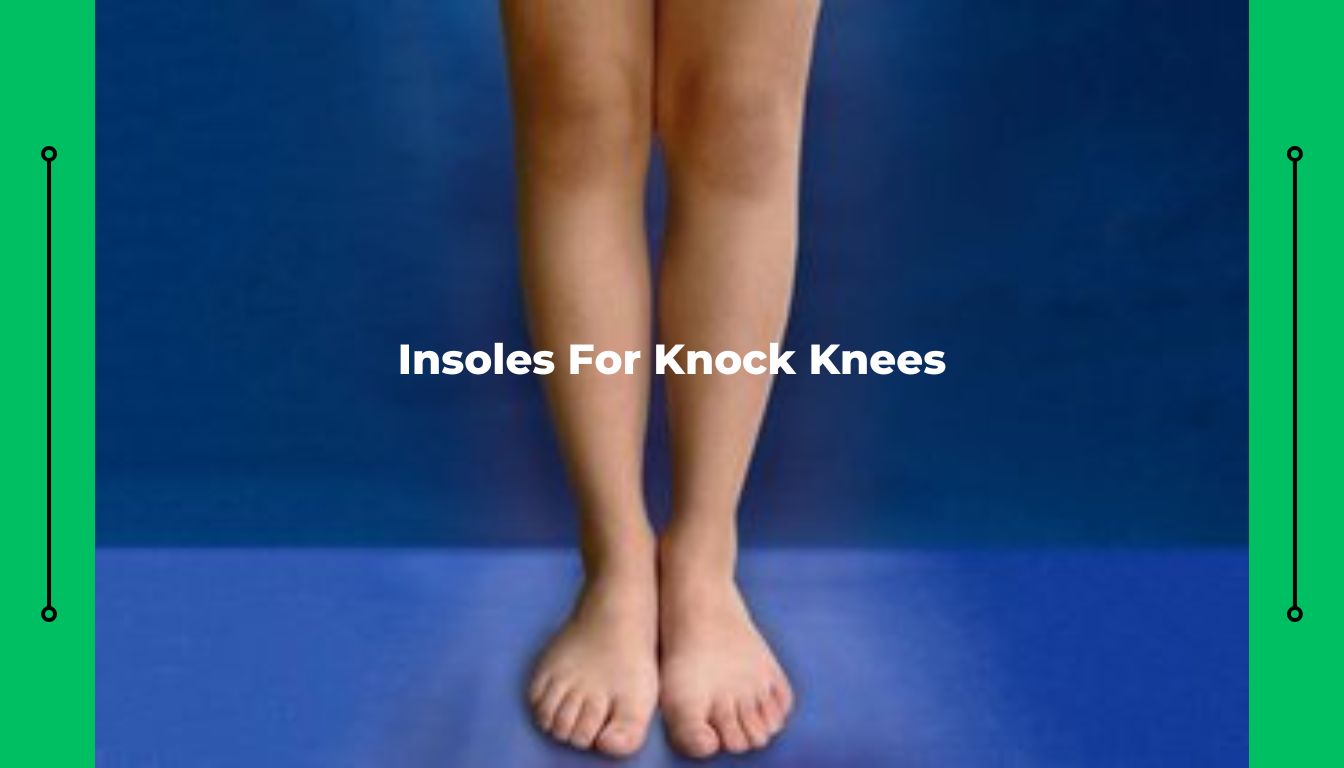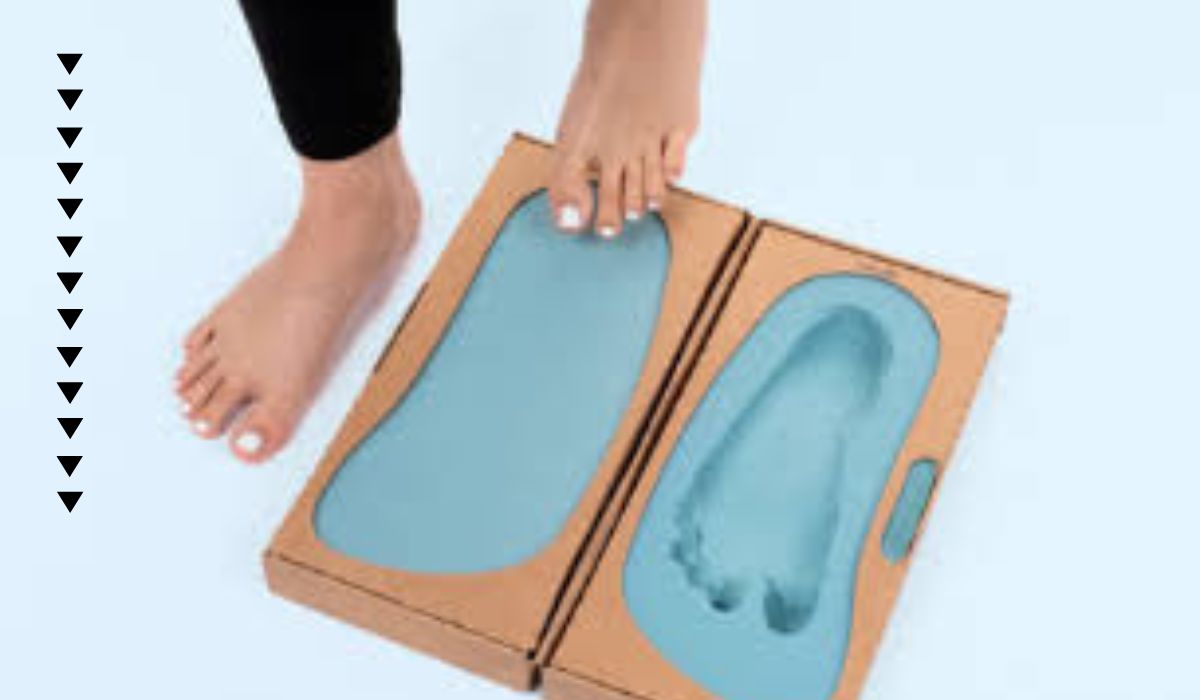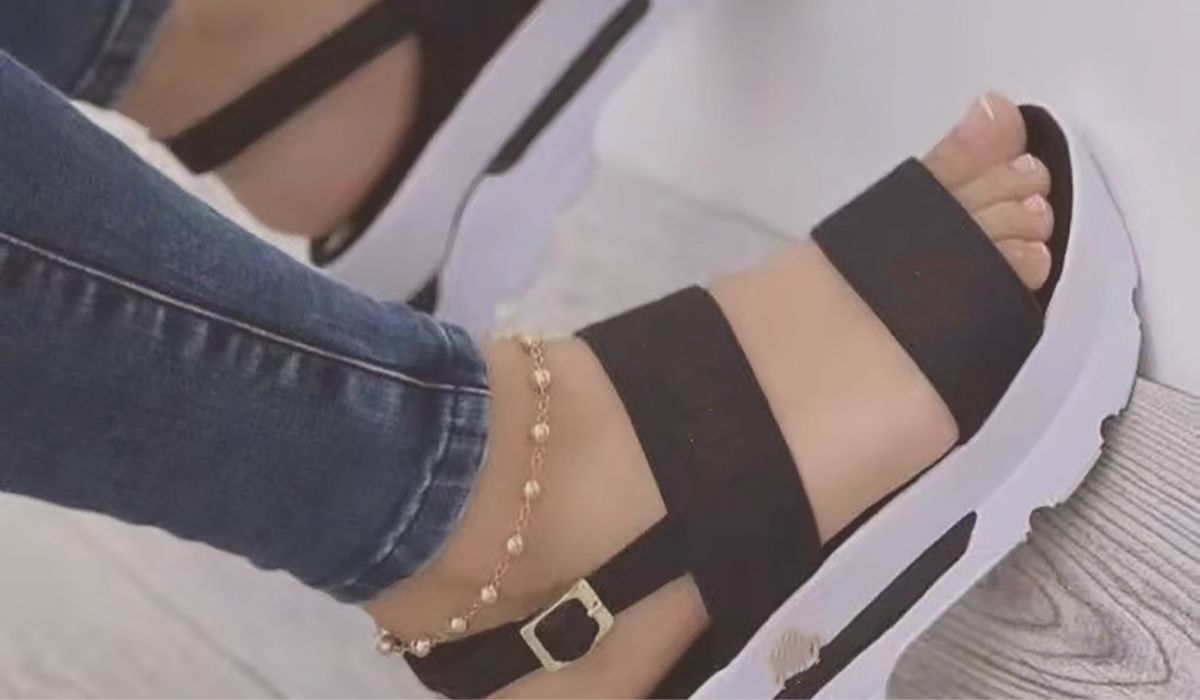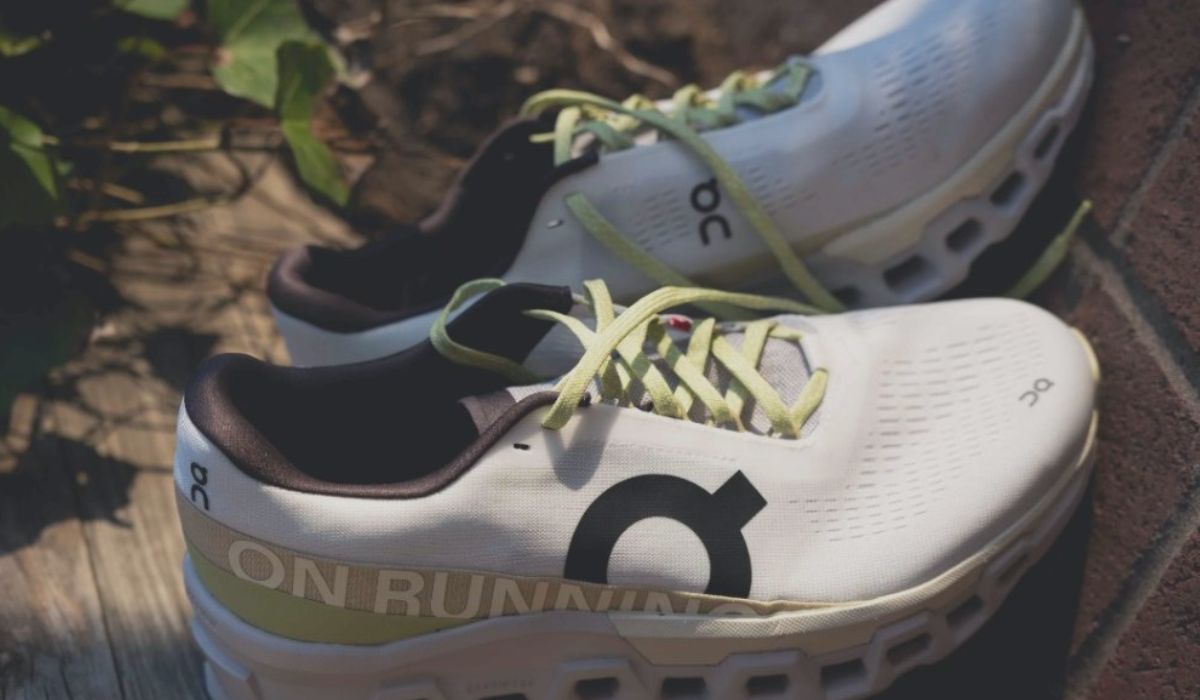Table of Contents
ToggleOverview
An often-ignored yet vital part of shoes, insoles support our feet and keep us comfortable all day. But with time, insoles can gather bacteria, sweat, and grime that can cause odours and even jeopardize the health of your feet. Thus, keeping your insoles clean is essential to guarantee the best possible foot hygiene and comfort. Discover simple and effective tips on how to wash insoles, ensuring your steps are always fresh and comfortable. Say goodbye to odor and hello to happiness.

This post attempts to thoroughly explain the proper way how to wash insoles, complete with helpful hints and step-by-step directions for maintaining their freshness and odorlessness. By following these guidelines, you can not only extend the lifespan of your insoles but also promote better overall foot health.
Throughout the following sections, we’ll look into numerous areas of insole care, from recognizing the signals that your insoles require cleaning to different techniques of how to wash insoles and drying them properly. Whether you’re working with custom orthotic insoles or regular shoe inserts, this guide will provide the information and resources you need to keep your shoes sanitary.
Understanding Insoles
Insoles, sometimes called footbeds or shoe inserts, are supporting layers inserted into shoes to give the feet more cushioning, comfort, and stability. They serve as a barrier between the foot and the shoe’s bottom surface, offering various benefits to the wearer.
The meaning of insoles and their function in shoes:
Insoles are specifically created to enhance the fit and feel of shoes, adapting to diverse foot shapes, arch types, and walking patterns. They are critical in spreading pressure uniformly over the foot, decreasing strain on specific areas and alleviating discomfort during prolonged standing or walking.

Moreover, insoles can help correct biomechanical imbalances, such as overpronation or supination, by providing adequate support to the arches and promoting proper foot alignment. This promotes comfort and minimizes the danger of foot-related ailments and disorders like plantar fasciitis or shin splints.
Apart from providing comfort and support, insoles can also aid in wicking away moisture and controlling odour, ensuring that the feet stay fresh and dry all day. Some insoles are made with extra features like shock absorption, energy return, or antimicrobial capabilities to improve their usefulness and performance further.
Different Types of Insoles and Materials Used:
To accommodate a range of demands and tastes, insoles are available in various styles and materials. Among the popular varieties of insoles are:

Foam Insoles: Made from soft, lightweight foam materials such as polyurethane or memory foam, foam insoles provide cushioning and shock absorption, making them ideal for everyday wear and casual shoes.
Gel Insoles: Gel insoles are inserts packed with gel that provide great support and cushioning, especially for those with pain or discomfort in their heels. They can relieve pressure points and relieve ailments like metatarsalgia or heel spurs.
Orthotic insoles: address certain foot problems or ailments, like plantar fasciitis, high arches, or flat feet. They provide customized support and alignment to improve foot biomechanics and reduce pain and discomfort.
Leather Insoles: Leather insoles are durable and breathable, offering natural moisture-wicking properties and a comfortable feel. They conform to the foot’s shape over time, offering tailored support and boosting overall comfort.
EVA (ethylene-vinyl acetate) insoles absorb shock and offer cushioning without making the shoe bulkier. They are lightweight and flexible. They are frequently found in performance-oriented and athletic footwear.
In addition to these sorts, there are also hybrid insoles that mix different materials or technologies to give a balance of support, cushioning, and durability. Choosing the right type of insole depends on individual preferences, foot anatomy, and intended use, ensuring optimal comfort and performance for the wearer.
How to Wash Insoles: Signs Your Insoles Need Washing
Maintaining your insoles’ freshness and overall health and foot hygiene depends on keeping them clean. The following are some obvious indicators that it’s probably time to give your insoles a good wash:

- Odour: One of the most apparent signs that your insoles need cleaning is a persistent, unpleasant odour emanating from your shoes. This stench is generally generated by the collection of sweat, germs, and dead skin cells on the insoles, creating an excellent environment for microbial growth.
- Discoloration: Dirt, sweat, and other pollutants can accumulate over time and cause insoles to become discoloured. This discolouration may appear as dark spots or stains on the surface of the insoles, indicating the need for cleaning to restore their appearance and freshness.
- Stickiness or Tackiness: Dirty insoles may feel sticky or tacky, particularly in regions where sweat and oils have accumulated. This stickiness affects comfort and increases the likelihood of bacterial growth and foot odour.
- Itchiness or Irritation: Unclean insoles can harbour allergens, dust mites, and other microscopic particles that may cause itching or irritation to the skin of the feet. If you notice increased discomfort or sensitivity while wearing your shoes, it may be a sign that your insoles need washing.
- Increased Perspiration or Foot Odor: Unclean insoles may be the cause if you notice that your feet are sweating more than usual or that the smell of your feet has intensified. Bacteria thrive in moist environments, and sweaty, unclean insoles provide the perfect breeding ground for these odour-causing microbes.
Impact of Unclean Insoles on Foot Hygiene and Health
Neglecting how to wash your insoles regularly can have several negative effects on foot hygiene and overall health:

- Bacterial and Fungal diseases: Dirty insoles can hold bacteria, fungi, and other pathogens that may lead to diseases such as athlete’s foot, toenail fungus, or bacterial skin infections. These disorders can cause discomfort, irritation, and inflammation, requiring medical therapy to alleviate.
- Foot Odour: Persistent foot odour can be embarrassing and uncomfortable in social situations. It is caused by sweat and bacteria building up on dirty insoles. Moreover, chronic foot odour may indicate underlying foot hygiene issues that must be addressed to prevent further complications.
- Skin Irritation and Allergies: Dust mites, allergens, and other particles that accumulate on dirty insoles can irritate the skin of the feet, leading to itching, redness, or allergic reactions. Individuals with sensitive skin or allergies may be particularly susceptible to these effects.
- Lower Comfort and Performance: Dirty insoles can lose their cushioning and support capabilities over time, leading to lower comfort and greater fatigue during walking or standing. This may affect one’s ability to do physically demanding tasks and aggravate existing foot pain.
In conclusion, keeping insoles clean is critical to maintaining good foot hygiene, avoiding infections, and guaranteeing maximum comfort and well-being. You can reduce these risks and increase the longevity of your shoes by regularly cleaning them and fully knowing how to wash insoles.
Preparing for Washing – How to wash Insoles
Before knowing how to wash insoles, gathering the necessary materials and preparing your shoes properly is important. Here’s what you’ll need and how to wash insoles:
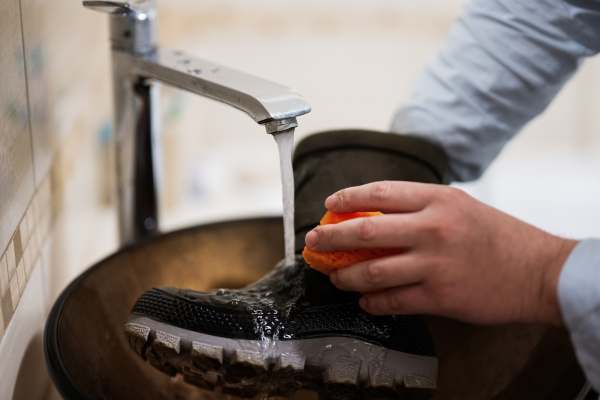
Materials Needed for Washing Insoles:
Mild detergent or soap: Choose a gentle detergent or soap suitable for delicate fabrics to avoid damaging the insoles.
Soft-bristled brush or cloth: Use a soft-bristled brush or a clean cloth to gently cleanse the surface of the insoles and remove any debris or stains.
Lukewarm water: Fill a basin or sink with lukewarm water to soak the insoles and help clean.
Towels: Have towels on hand to absorb excess water and aid in drying the insoles after washing.
Optional: Vinegar or baking soda: If dealing with stubborn odours, consider adding a small amount of vinegar or baking soda to the water to help neutralize smells.
Removing Insoles from Shoes Properly: How to wash insoles
Lace-up Shoes: If your shoes have laces, start by loosening or removing the laces to gain access to the insoles. After tying the shoe’s laces, carefully pull the tongue forward to reveal the insoles.

Slip-on Shoes: To put on slip-on shoes like sneakers or loafers, reach inside and grasp the insole’s edge closest to the heel. Gently pull upwards to detach the insole from the shoe’s interior.
Orthopaedic Shoes: Removable insoles that fit custom orthotics may be found in some shoes, especially orthopaedic or speciality footwear. If you need help to remove the insoles correctly, follow the manufacturer’s instructions or see a podiatrist.
Observe Positioning: After removing the insoles, observe where they are in the shoes. Certain insoles have particular shapes or characteristics to offer focused support or cushioning. To keep them effective after washing, make sure they are reinserted correctly.
By gathering the appropriate supplies and carefully removing the insoles from your shoes, you’ll be well-prepared on how to wash insoles and restore your insoles to freshness and cleanliness.
How to wash insoles: A Comprehensive Guide
Cleaning your insoles is a simple yet essential task to maintain their freshness and extend their lifespan. Follow these step-by-step instructions for how to wash insoles effectively:

Spot Cleaning: Begin by inspecting the surface of the insoles for any visible dirt or stains. Using a soft-bristled brush or a clean cloth, gently brush or wipe away surface dirt and debris. Focus on areas where dirt is most concentrated, such as the heel or toe. Take care not to scrub too aggressively, especially if the insoles are made of fragile materials, to prevent causing damage.
Hand Sanitization: Fill a basin or sink with lukewarm water and add a small amount of mild detergent or soap. Mix the water to make a soapy solution. Submerge the insoles in the soapy water, ensuring they are fully immersed.
Focusing on the insoles with stains or smells, gently stir the water and scrub the insoles with your hands or a soft brush. Avoid harsh chemicals or bleach, which may damage the insoles or cause discolouration. Once the insoles are clean, rinse them thoroughly under running water to remove any soap residue.
Machine Washing: If your insoles are machine washable and the manufacturer’s instructions permit it, you can wash them in a machine for increased convenience. Place the insoles inside a mesh laundry bag or pillowcase to protect them from being tangled or damaged during the wash cycle. Select a gentle or delicate cycle on your washing machine and use cold or lukewarm water.
Avoid using hot water since it may cause the insoles to shrink or warp. Add a small amount of mild detergent to the washing machine, following the manufacturer’s recommended dosage. Once the wash cycle is complete, remove the insoles from the laundry bag or pillowcase and let them air dry completely before reinserting them into your shoes.
Drying: After washing, it’s crucial to dry the insoles thoroughly to prevent mould and mildew growth. For air drying, lay the insoles flat on a clean towel in a well-ventilated area away from direct sunlight or heat sources. Allow them to air dry completely before reinserting them into your shoes.
If using a dryer, set it to a low heat or air-dry setting to prevent damage to the insoles. Place the insoles inside a mesh laundry bag or pillowcase to protect them during drying. Avoid placing wet insoles directly on heated surfaces or using high heat settings, as this may cause shrinkage or deformation.
You can successfully remove odours, stains, and dirt from your insoles while maintaining their functionality and quality for ongoing comfort and support by following these step-by-step instructions on how to wash insoles.
Advice on Cleaning Various Kinds of Insoles
Proper care and maintenance of your insoles ensure their longevity and performance. Here are specific care instructions tailored to different types of insoles, including gel, foam, and orthotic varieties, along with tips for handling custom-made inserts:

Gel Insoles:
Spot Cleaning: Use a damp cloth or sponge to gently wipe the surface of the gel insoles to remove dirt and stains.
Avoid Heat: Avoid exposing gel insoles to direct heat sources such as sunlight or hairdryers, as excessive heat can damage the gel material.
Store Properly: Store gel insoles in a cool, dry place away from direct sunlight to prevent deterioration of the gel material.
Foam Insoles:
Hand Washing: Foam insoles can be hand washed using mild detergent, soap, and lukewarm water. Gently scrub the insoles with a soft brush or cloth to remove stains and odours.
Air Dry: Allow foam insoles to air dry thoroughly before reinserting them into your shoes. Avoid using heat sources such as dryers, as high temperatures can cause the foam to warp or shrink.
Orthotic Insoles:
Follow Manufacturer’s Instructions: If your orthotic insoles come with specific care instructions from the manufacturer or healthcare provider, follow them carefully to ensure optimal performance and durability.
Avoid Submerging: Avoid submerging orthotic insoles in water, as excessive moisture can damage the materials or compromise the integrity of any custom adjustments.
Spot Clean as Needed: For minor cleaning, spot clean orthotic insoles with a damp cloth and mild detergent to not saturate the entire insole.
Custom-Made Inserts:
Handle with Care: Custom-made inserts are designed to fit the unique contours of your feet, so handle them with care to avoid deformation or damage.
Consult a Professional: If you need help cleaning or maintaining custom inserts, consult with the healthcare provider or podiatrist who prescribed them for personalized care instructions.
Regular Inspection: Check your custom-made inserts for wear or deterioration regularly. If necessary, seek professional advice before making any adjustments or replacements.
You can effectively maintain the functionality and cleanliness of your gel, foam, orthotic, and custom-made insoles and provide your feet with long-lasting comfort and support by adhering to these specific care instructions about how to wash insoles.
How Often Should You Wash Insoles? How to wash insoles!
Determining how frequently you should wash your insoles depends on various factors influencing their cleanliness and odour buildup. Here are some considerations to help you gauge the appropriate frequency of how to wash insoles, along with general recommendations for maintaining clean insoles:

Factors Influencing the Frequency of Insole Washing: How to wash insoles
Use Frequency: The more often you wear your shoes, the quicker grime, sweat, and odour will build up in your insoles. If you wear your shoes daily, you may need to wash the insoles more frequently compared to occasional wear.
Activity Level: Physical activities that induce sweating, such as exercise or outdoor activities, can accelerate sweat build-up and odour on insoles. If you engage in vigorous activities regularly, consider washing your insoles more frequently to prevent bacterial growth and odour.
Environmental Conditions: Hot and humid environments create ideal conditions for bacterial and fungal growth, leading to faster odour development on insoles. If you live in a damp area or frequently wear shoes in sweaty surroundings, you may need to wash your insoles more often to retain freshness.
Foot Health: To effectively manage foot conditions or hygiene issues, such as excessive sweating (hyperhidrosis) or foot odour, individuals may need to wash their insoles more frequently.
Material and Design: The type of material and design of your insoles can also influence how quickly they accumulate dirt and odour. For example, foam insoles may absorb more sweat and develop odour faster than gel or leather insoles.
General Recommendations for Maintaining Clean Insoles:
Regular Inspection: Inspect your insoles for signs of dirt, discolouration, or odour build up. If you notice any of these signs, it’s time to wash your insoles.
How To Wash Insoles
Rotate Shoes: Rotating between multiple pairs of shoes allows each pair to air out and dry between wears, reducing the risk of odour and bacterial growth on insoles. Consider alternating shoes daily to give each pair sufficient time to dry.
Use Odor-Control Products: Consider using odour-control products such as activated charcoal inserts or insole deodorizers to absorb moisture and neutralize odours between washings.
Air Out Shoes: After wearing your shoes, remove the insoles and allow both the shoes and insoles to air out in a well-ventilated area to help reduce moisture buildup and prevent odour.
Follow Care Instructions: Follow the manufacturer’s care instructions for your insoles to ensure proper cleaning and maintenance. Avoid using harsh chemicals or excessive heat, as these can damage the materials and reduce the lifespan of the insoles.
By considering these factors and following general recommendations for maintaining clean insoles, you can establish a washing routine on how to wash insoles, that keeps your footwear fresh, comfortable, and hygienic. Adjust the frequency of how to wash insoles based on your individual needs and lifestyle to ensure optimal foot health and comfort.
How to Wash Insoles with Baking Soda
How to wash insoles with baking soda is an effective and natural method for eliminating and refreshing odours. Here’s a step-by-step guide on how to wash your insoles using baking soda:
Materials Needed:
- Baking soda
- lukewarm water
- Soft-bristled brush or cloth
- Mild detergent (optional)
Step-by-Step Process:
Remove the Insoles: Take the insoles out of your shoes carefully to prepare them for washing.
Prep the Baking Soda Solution: Fill a basin or sink with lukewarm water. Add a generous amount of baking soda to the water and stir until it dissolves. If desired, you can also add a small amount of mild detergent to the solution for extra cleaning power.
Soak the Insoles: Make sure the insoles are completely submerged in the baking soda solution. Allow them to soak for about 15-30 minutes to allow the baking soda to penetrate and neutralize odours.
Scrub the Insoles: After soaking, use a soft-bristled brush or cloth to scrub the surface of the insoles gently. Focus on areas with tenacious stains or odours, using circular strokes to release dirt and grime.
Rinse completely: Once you’ve cleaned the insoles, rinse them under running water to eliminate any remaining baking soda residue and soap. Ensure that all traces of baking soda are washed away to prevent any gritty feeling when wearing the insoles.
Air Dry:
- After rinsing, pat the insoles dry with a clean towel to remove excess moisture.
- Allow them to air dry completely in a well-ventilated area away from direct sunlight or heat sources.
- Avoid using a dryer, as high heat can damage the materials of the insoles.
Reinsert into Shoes: Once the insoles are completely dry, reinsert them into your shoes and enjoy the refreshed and odour-free footwear.
how to wash insoles with baking soda is a simple and natural way to eliminate odours and keep them fresh. Repeat this process to maintain cleanliness and hygiene, especially if you wear your shoes frequently or engage in activities that cause excessive sweating.
How to Wash Insoles with Vinegar
How to wash insoles with vinegar is an effective method for eliminating odours and disinfecting them. Here’s a step-by-step guide on how to wash your insoles using vinegar:
Materials Needed:
- White vinegar
- Water
- Soft-bristled brush or cloth
- Mild detergent (optional)
Step-by-Step Process:
Remove the Insoles: Carefully remove them from your shoes to prepare them for washing.
Create Vinegar Solution: Mix equal white vinegar and water in a basin or sink. If desired, you can also add a small amount of mild detergent to the solution for extra cleaning power.
Soak the Insoles: Place them in the vinegar solution and ensure they are fully submerged. Allow them to soak for 15-30 minutes to allow the vinegar to penetrate and neutralize odours while disinfecting the insoles.
Scrub the Insoles: After soaking, use a soft-bristled brush or cloth to scrub the surface of the insoles gently. Focus on areas with tenacious stains or odours, using circular strokes to release dirt and grime.
Rinse Thoroughly: Once you’ve scrubbed the insoles, rinse them thoroughly under running water to remove any remaining vinegar solution and dirt. Ensure that all traces of vinegar are washed away to prevent any lingering smell.
Air Dry:
- After rinsing, pat the insoles dry with a clean towel to remove excess moisture.
- Allow them to air dry completely in a well-ventilated area away from direct sunlight or heat sources.
- Avoid using a dryer, as high heat can damage the materials of the insoles.
Reinsert into Shoes: Once the insoles are completely dry, reinsert them into your shoes. Enjoy the refreshed and odour-free footwear. Washing your insoles with vinegar is a simple and natural way to eliminate odours, disinfect, and freshen them.
Repeat this process to maintain cleanliness and hygiene, especially if you wear your shoes frequently or engage in activities that cause excessive sweating.
Maintaining Insoles for Longevity
Proper maintenance of your insoles is essential to ensure their longevity and effectiveness. Here are some preventive measures to keep your insoles clean and odour-free, along with proper storage techniques to avoid deterioration:
Preventive Measures:
Regular Cleaning: Establish a routine for cleaning your insoles to prevent dirt, sweat, and odour build-up. Aim to clean them at least once a month or as needed, depending on usage.
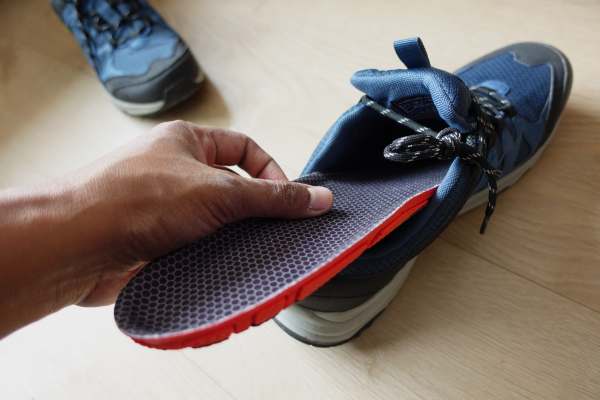
Spot Cleaning: Spot clean your insoles whenever you notice dirt or stains. Use a mild detergent or soap and a soft brush or cloth to scrub the affected areas gently.
Air Out Shoes: Allow your shoes to air out between wears to prevent moisture build-up and reduce the risk of odour. Remove the insoles and let both the shoes and insoles dry thoroughly in a well-ventilated area.
Use odour-Control Products: Consider using odour-control products like insole deodorizers or activated charcoal inserts to absorb moisture and eliminate odours between cleanings.
Alternate Shoes: Rotate between multiple pairs of shoes to give each pair time to air out and dry between wears. This helps prevent moisture build-up and extends the lifespan of your insoles.
Wear Moisture-Wicking Socks: Choose socks made from moisture-wicking materials to help keep your feet dry and reduce the amount of sweat absorbed by the insoles.
Avoid Excessive Heat: Avoid exposing your insoles to direct heat sources such as sunlight or hairdryers, as high temperatures can damage the materials and cause them to deteriorate.
Proper Storage Techniques:
Clean and Dry Insoles: Ensure they are clean and completely dry before storing them to prevent mould or mildew growth.
Store in a Cool, Dry Place: Store your insoles in a cool, dry place away from direct sunlight, heat sources, and moisture. Avoid storing them in sealed plastic bags or containers, which can trap moisture and promote mould growth.

Keep Insoles Flat: Store them flat to maintain shape and prevent warping or distortion. Avoid folding or creasing them, as this can weaken the materials over time.
Use Shoe Trees or Inserts: Consider using shoe trees or inserts to help maintain the shape of your shoes and insoles while in storage. This can also help promote airflow and prevent moisture build-up inside the boots.
By following these preventive measures and proper storage techniques, you can effectively maintain your insoles’ cleanliness, freshness, and longevity, ensuring continued comfort and support for your feet.
Conclusion
Regularly washing your insoles is crucial for maintaining foot hygiene, preventing odours, and ensuring long-lasting comfort and support. By implementing the provided tips and techniques for how to wash insoles, you can enjoy cleaner, fresher footwear and promote better foot health.
We’ve discussed various methods for how to wash insoles, including using baking soda, vinegar, or mild detergent, as well as preventive measures to keep them clean and odour-free. Additionally, proper storage techniques can help prevent deterioration and maintain the effectiveness of your insoles over time.
Please incorporate these tips about how to wash Insoles into your footwear care routine to ensure optimal foot hygiene and comfort.
Remember, clean insoles mean happy feet. So, let’s keep washing and caring for our insoles so we can step into each day with comfort and confidence!
FAQs
Q. Can you put insoles in the washing machine?
Ans. While washing your insoles, there are a few things to bear in mind depending on the material your insoles are made out of. You can put some materials in the washing machine on the gentle cycle, though the recommended method is hand washing.
Q. How often should you wash insoles?
Ans. According to our recommendation, you must wash your insoles once a month atleast, to avoid any fungus.
Q. Can you wash shoe insoles with dish soap?
Ans. Yes! you can wash your insoles with dish soap.
Also Read;
How to Wash Insoles: Freshen Up Your Insoles


